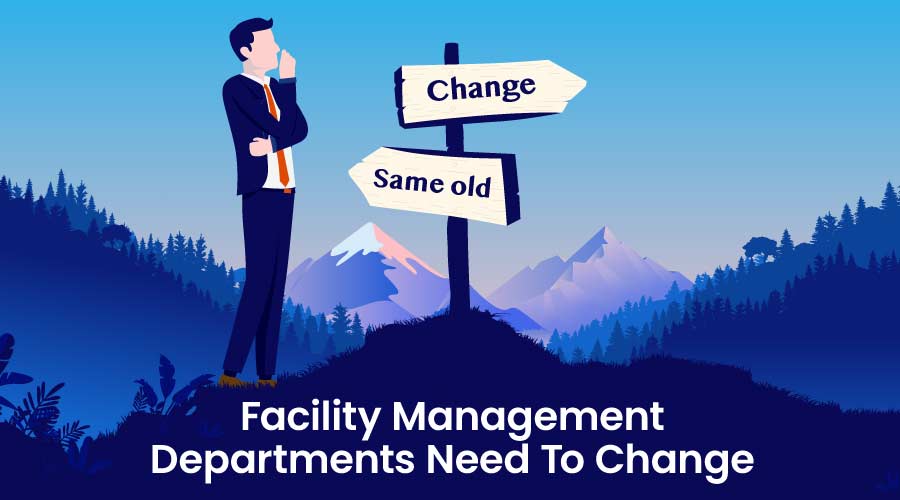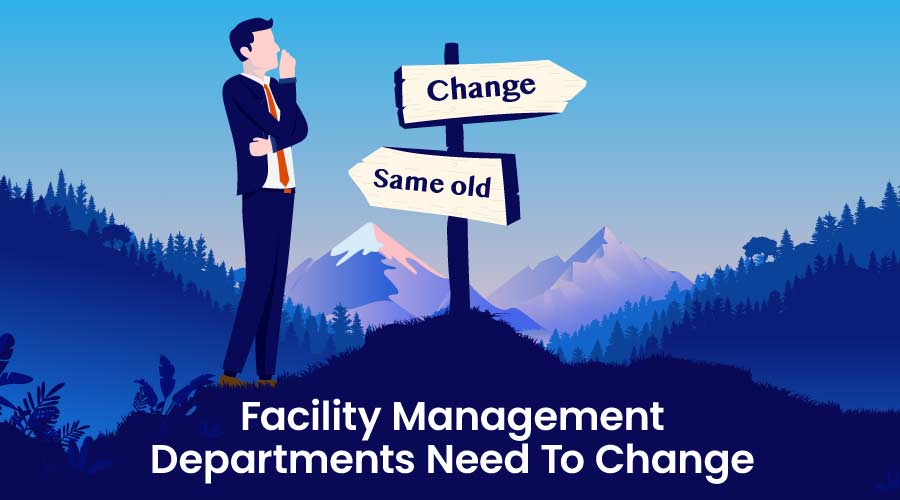
by John Rimer — The first step in resolving a problem is acknowledging one exists. Take a step back and evaluate the current state of your respective facility management program. Ask the tough questions: “Where are we going?” “How are we doing at getting there?” “Are we stuck, mired in ambivalence or firefighting?” Or “Are we burdened by legacy systems, processes, or mindsets?”
Demands upon the facility industry are ever-changing, continually pressuring your department. If you do not change and rise to meet these requirements, your organization will stumble and continue to struggle.
You must continually advance your program. Status quo is not acceptable. There is a better way — there is always a better way. Failure to change is a detriment to your department, organization, and the industry. It is imperative that you shirk the limiting mindset of “That’s how we’ve always done it.” Leave the legacy behind and move forward.
Set a vision for the future
Now that you have completed your introspection and convinced yourself that change is necessary, the next burgeoning question is “Where to start?” The simple answer is to begin with the end in mind. Set a vision for the future.
Many facility organizations struggle to dream big. The smoke and haze of reactive firefighting clouds visibility and limits sight for some. Lack of knowing anything different or better inhibits others from advancing. If the horizon is fuzzy or too distant to see clearly, look outside the organization. Benchmark against other organizations and industry standards. Seek direction from industry experts and resources. Enlist support to help paint a picture for you and your team.
In addition, work with your team to determine where they want to go and what they want to be known as within the organization. Host brainstorming, whiteboard sessions to solicit input. The output of such discussions should be a draft vision and/or mission statement that reflects the value your department delivers to the organization.
Engage the team early from the managers and supervisors to the boots in the field and include them in the process. These steps will help sow seeds of change that can easily be harvested as the program progresses, encouraging adoption and hopefully promotion of the forthcoming improvements.
Plan for success
Now that a destination is set, a plan to get from point A to point B is required to ensure the department stays on track to achieve the desired vision. Perform a gap analysis, comparing where your department is now to where it wants to go, then draft a roadmap to bridge the gap. As a word of caution, do not allow current resources to limit the plan or direct the approach. Rather, determine how to morph what you have into what you need.
The plan should be tactical and reasonable. The plan will likely take years to implement, so plan for the long haul. However, establish and track meaningful milestones that encompass the various aspects of your facility management program. Phased approaches tend to return the best measurable results.
While the plan provides framework and guidance, it should remain flexible, able to adapt to business changes and customer expectations.
After creating your roadmap, try not to get overwhelmed by the daunting task of implementing. You do not have to “eat the whole elephant” at once. Work through it bite by bite, checking items off the list. Celebrate successes. Reward progress and participation. Measure and market performance and the resulting value to the organization. Do not let paralysis set in. Start small. Take that first step.
Don’t journey alone
As you travel this path, it is important to keep in mind that you are not alone. Your fellow facility practitioners share in the same struggles. You do not have to reinvent the wheel. Engage third-party experts to assist with painting a picture and implementing change. Participate in industry associations and conferences. Reach out to nearby colleagues that have chartered the waters. Learn from those that are farther down the path. Share your knowledge with others. Spur one another on toward success.


